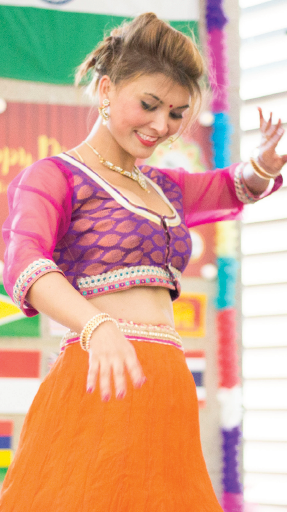
Ferris International students hosted the third annual Ferris State Diwali event featuring students dancing, painting henna, serving Indian food and participating in a rangoli making competition.
Diwali, also known as Deepawali in Nepal, is a festival celebrated by Hindus, Sikhs, Jains and Buddhists around the world. In India, the celebration centers around victory of the light over darkness, good over evil and knowledge over ignorance.
“Here at Ferris, we are more like participants,” said Ferris computer information security graduate student Ranjith Katukojwala. “We also have students from other countries– Nepal and Thailand–who are also celebrating here. It’s a really good experience for us and we are not really missing home here.”
Some students celebrating were also from Malaysia and Sri Lanka—countries with large Hindu and Buddhist populations that also celebrate Diwali.
In Nepal, Deepawali celebrations take on the characteristics of celebrating all life. Although there are many similarities between Nepal and India in the celebrations, the reasons and the meanings behind Diwali/Deepawali festivals are different.
“The first dance is the Tihar dance from Nepal and is a traditional cultural dance. The gods, they sing and they dance and have fun,” said Ferris sociology senior Sangita Khadka. “The second dance is the people welcoming the goddess Laxmi into their home. They’re cleaning their home, they’re respecting their brothers and sisters, they’re respecting their elders, and welcoming the goddess into their home so they can have happiness and prosperity in their lives.”
Deepawali is not only celebrated by the Nepalese as a light over darkness festival, like in India, but they also celebrate it by honoring all life, and how the animals and spices protect, cure them and provide for them.
“In Nepal, we have more than electricity light, we have a special ‘diyas.’ We light this special candle, it’s a handmade candle called ‘diyo.’ We light them and decorate the house,” Khadka said. “In comparison to India, it’s totally different. We have the same festival and the same kind of music, only the language is different. The food is the same but the spices are different. The culture is the same but the ways we celebrate are different.”
Celebrating Diwali/Deepawali in the United States has taken on different characteristics for the different students celebrating the festival.
Khadka said it was much different for her because some items for celebrating are not available, and gave the example that her outfit wasn’t complete.
There are also many different regional practices in India. For example, in southern India, many people celebrate with fireworks and sweets. In the north of India, card games are played and more emphasis is put on making sweets.
“When I went to my first Diwali here, last year, I missed home for some time. I missed playing with ‘crackers’ or fireworks,” Katukojwala said. “But this time, even though we have less Indian students, we are celebrating a good year.”
Ferris HVACR student Anirudh Baliga said he looks forward to events like this from the International Student Organization so he can celebrate with his friends. He said it’s a good feeling to share his culture with other people, and because of Skype he can talk with his family back home to wish them well, too.
“Advice for anyone American, try to celebrate and actively participate in the events they have going on,” said Grand Valley State University accounting junior Danielle Panchal. “Go and do the rangoli and get henna done if you want it. It’s a lot of fun.”
Katukojwala expressed his gratitude toward Ferris for making the Diwali celebration possible.
“I’m very excited to see this festival growing here. I hope everyone likes it,” Katukojwala said. “Our motivation here is diversity, and I hope every culture here respects the other cultures represented here. I hope they’ll do this every year.”
For a full photo gallery of the Diwali Festival, click here.
